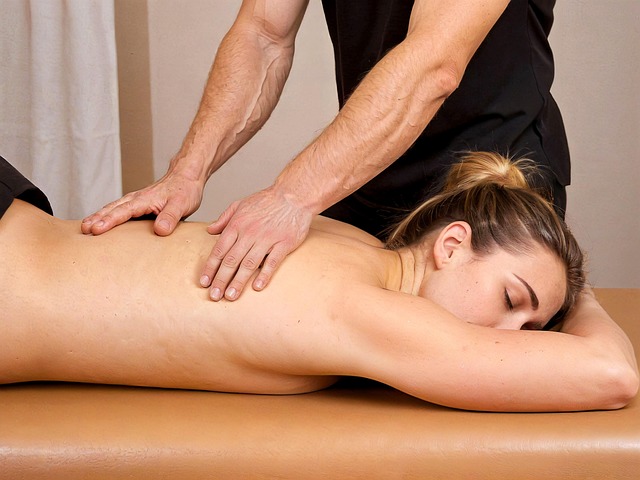Cold water immersion therapy, involving short periods in water below 59°F, offers numerous health benefits like accelerated muscle recovery, reduced inflammation, joint pain relief, and improved mood. Athletes and active individuals benefit from enhanced mental clarity and faster recovery times, making it an accessible alternative to cryotherapy. This practice also fosters community through communal cold plunges, strengthening social bonds while providing physical and mental health advantages. As a natural cryotherapy replacement, cold water immersion techniques, including ice bath therapy, are ideal for managing injuries, boosting energy levels, and maintaining peak athletic performance.
Discover the transformative power of group cold water immersion—a community-driven practice that goes beyond physical chilling. This therapeutic ritual, also known as cold plunge therapy or cryotherapy alternatives, offers a multitude of health benefits, from enhanced mental well-being to improved athletic performance. By diving into the icy depths together, individuals forge connections and unlock shared resilience. Explore the science behind cold water immersion therapy, its diverse applications from cold water recovery techniques to ice bath therapy, and why it’s becoming a popular choice for folks seeking natural solutions for optimal health.
Understanding Cold Water Immersion Therapy: Unlocking the Power of Cold
Cold water immersion therapy, also known as cold plunge therapy or ice bath therapy, involves submerging oneself in cold water, typically below 59°F (15°C), for a short period. This practice has gained popularity among athletes and individuals seeking enhanced performance and recovery. The benefits of cold water therapy are multifaceted; it aids in muscle recovery after intense workouts, reduces inflammation, and alleviates joint pain.
As a cryotherapy alternative, cold exposure therapy stimulates the release of endorphins, often referred to as “feel-good” hormones, which can boost mood and reduce stress. Moreover, cold water immersion for athletes can improve circulation, enhance mental clarity, and speed up recovery time, making it an attractive option for those looking to unlock their full potential in both physical and mental performances.
Benefits Beyond Chills: The Impact of Cold Water on Physical and Mental Well-being
Cold water immersion therapy goes beyond a mere chill—it offers a multitude of benefits for both physical and mental well-being. When individuals engage in cold plunge therapy, such as an ice bath or cold water immersion, their bodies initiate a series of physiological responses that can have long-lasting positive effects. The shock of cold water triggers vasoconstriction, causing blood to rush from the extremities to vital organs, enhancing circulation and potentially improving cardiovascular health. This sudden cold exposure also stimulates the release of endorphins, often referred to as “feel-good” hormones, which can reduce pain perception and alleviate stress and anxiety.
For athletes, cold water recovery techniques like cold water immersion for athletes have gained popularity. The cold water helps flush out metabolic waste products that accumulate during intense exercise, reducing muscle soreness and speeding up recovery time. Moreover, regular exposure to cold water can improve mental resilience and focus, making it a valuable tool for managing stress and enhancing overall well-being. As an alternative to cryotherapy, which involves short bursts of extreme cold, cold water immersion offers a more accessible and affordable way to reap similar benefits, potentially transforming daily routines into powerful tools for maintaining optimal health.
A Community Approach to Cold Therapy: Building Connections Through Shared Experiences
In today’s fast-paced world, finding opportunities to connect with like-minded individuals and foster a sense of community can be challenging. However, embracing a community approach to cold therapy offers a unique and powerful solution. Cold water immersion therapy, such as cold plunges or ice bath sessions, has gained popularity not only for its physical benefits but also for its ability to bring people together. When individuals gather to endure the refreshing chill together, they create a shared experience that serves as a foundation for building stronger connections.
This collective practice can foster a sense of camaraderie and support, as participants encourage and motivate each other. For athletes or anyone seeking recovery techniques, cold water immersion provides an opportunity to bond with peers who understand the physical and mental demands of their pursuits. It transforms a traditional form of therapy into a social event, where shared experiences create lasting memories and strengthen community bonds, ultimately enhancing the overall benefits of cold therapy.
Cold Water Immersions for Athletes: Enhancing Performance and Recovery
Cold water immersions have gained popularity among athletes as a powerful tool for enhancing performance and aiding recovery. This therapy involves submerging oneself in cold water, typically an ice bath or cold plunge, for a short period. The benefits are numerous; it reduces inflammation, alleviates muscle soreness, and accelerates the body’s natural healing process. By increasing blood flow to damaged muscles, cold water immersion can shorten recovery times, allowing athletes to return to their training routines faster.
This practice offers a natural and effective alternative to cryotherapy, providing similar results without the potential side effects. It is an excellent way for athletes to maintain peak physical condition, manage injuries, and improve overall well-being. The cold water exposure stimulates the release of endorphins, which can boost mood and energy levels, contributing to mental resilience, a key aspect of athletic performance.
Cold water immersion therapy offers a range of benefits beyond the initial chill, from enhancing physical and mental well-being to fostering community connections. By embracing shared experiences in cold plunges, individuals can tap into the power of cryotherapy alternatives, promoting faster recovery times for athletes and providing effective cold water health benefits for all. Incorporating cold exposure therapy into one’s routine not only opens doors to a vibrant community but also paves the way for a revitalized and resilient mindset.
